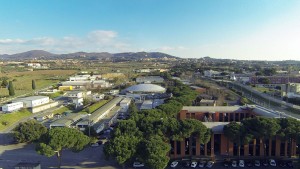The LNF scientific community is discussing the perspectives in fundamental physics research in Frascati.
 In the long-term LNF research program, the protagonist will be EUPRAXIA, project dedicated to the development of a new generation of accelerators based on cutting edge technologies like plasma acceleration.
In the long-term LNF research program, the protagonist will be EUPRAXIA, project dedicated to the development of a new generation of accelerators based on cutting edge technologies like plasma acceleration.
Nevertheless, physicists gave life to “Fundamental Physics in Frascati”, a bottom-up process to identify the fundamental research fields in which LNF, thanks to the scientific expertise and the infrastructures available in loco, continues contributing as protagonist at international level.
A first meeting was held on January 13 where various proposals have been discussed and three main interesting research fields emerged. A first sector, to be considered as an evolution of the already existing field carried on by PADME (Positron Annihilation into Dark Matter Experiment), concerns the research of dark matter using positron beams. It was highlighted that a dedicated update of the Dafne accelerator complex, i.e. LINAC, BTF and the main ring, could bring to a crucial improvement of the beams’ features, paving the way to dark photon and axion-like particles research. These, in certain regions of the parameter space, could reach a higher sensitivity with respect to the ongoing and upcoming experiments in other laboratories.
Another research field is related to axions, hypothetical particles that emerge both as a consequence of theories that try to explain why the strong interactions respect the Charge-Parity symmetry and account for the observations of dark matter in our Universe. The latter can be conducted at LNF, modifying one of the two big magnets formerly used by KLOE or FINUDA experiments in order to build a “haloscope”. The main characteristic that makes these magnets suitable for an experiment searching for axions is the large volume that will allow to investigate a still unexplored axion mass range.
Finally, it was presented the research field concerning the study of “strange” particles, like kaons which are particles containing one strange quark, that in the last years characterized the LNF scientific identity. In this meeting the continuation of the kaonic atoms study and the interactions between kaons and nuclei in the low energies regime has been proposed.
These studies could provide important indications of the structure of the matter at high density conditions, typical of compact astrophysics object such as neutron stars.
 INFN-LNF Laboratori Nazionali di Frascati
INFN-LNF Laboratori Nazionali di Frascati